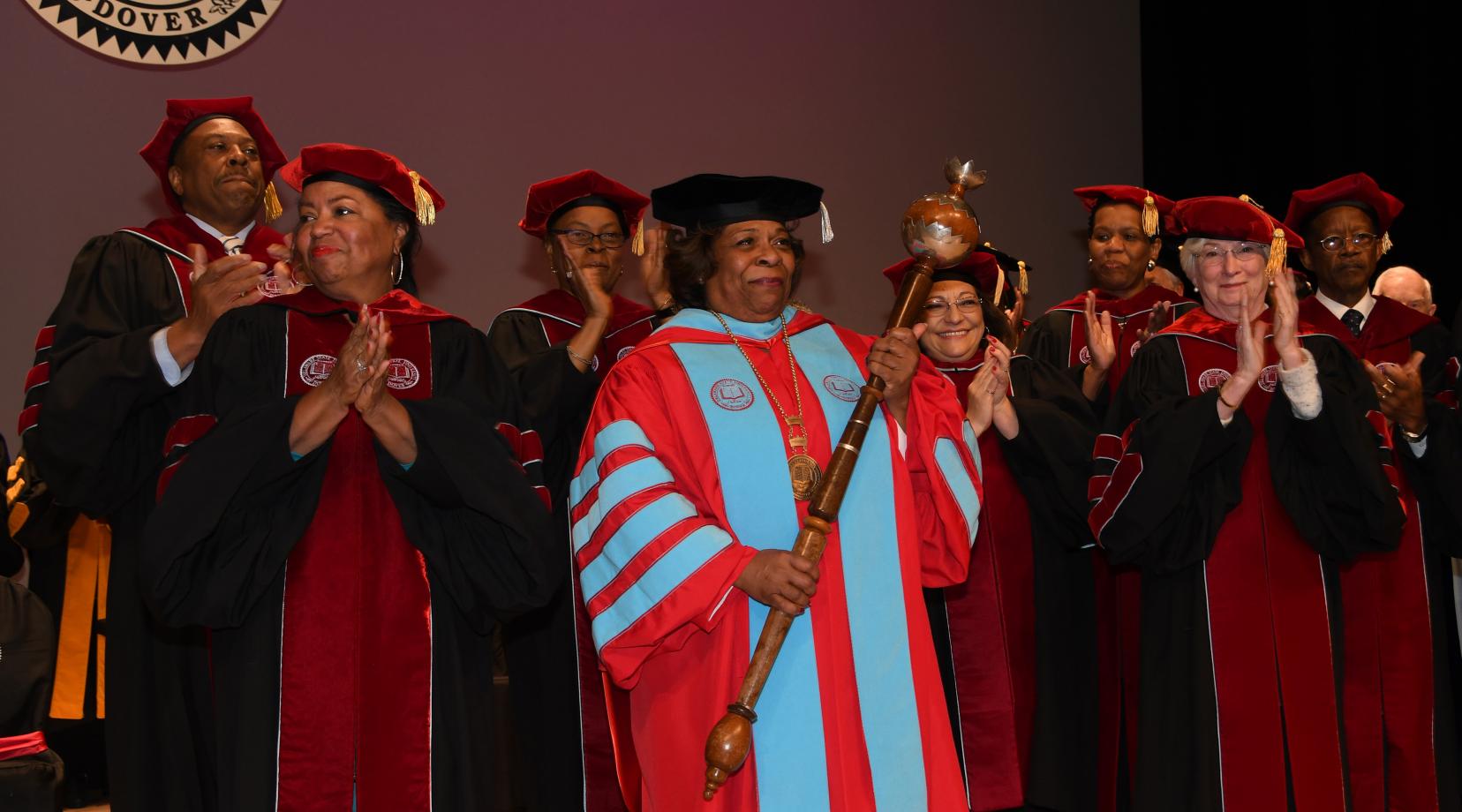The countdown to commencement is running with just ten days to go until we recognize the class of 2019. Also, shout out to the DSC class of 1969 who will be commemorating the 50 years since their graduation!
At this moment the university is preparing the grounds, and we, the faculty, are pulling our regalia out of the closets. Among the heraldry being "spiffed up" is the university's academic mace (pictured above in 1986).
The tradition of a ceremonial mace dates to the middle ages when the processional of a sovereign or high official would be marked by a proceeding mace-bearer. Today maces are most commonly seen in government and academic institutions. The United States House of Representatives, for example, has a highly symbolic mace of 13 ebony rods held together by silver strands and is topped by a globus and eagle.
Delaware State University's mace is simplistic in appearance but contains much symbolism. It was designed and constructed in 1963 by John McCollough, an assistant professor of art education. It is reminiscent of traditional English ceremonial maces from the 14th century. It is composted of a crowned globus to signify royal authority. The mace is constructed from silver and wood from seven continents - ebony from Africa, lace wood from Australia, rosewood from Africa and India, mahogany from the Philippines, pear wood from Switzerland, lignum vitae from South American and walnut from North America. The globus, or sphere represents the universe and the roles of art and science within it. The globus has a second meaning in that it is also meant to be symbolic of an atom. The silver crown, shaped like a star at the top of the globus represents the increasing significance of the space and technology age (the mace was made in 1963 when NASA was only five years old).
The mace was formerly carried by Dr. Ulyssess S. Washington who served as the university's grand marshal from 1953 until 2004. Thereafter, the title and the honor of bearing the mace was bestowed on Dr. Mable Renee Morrison, associate professor of music. Dr. Morrison has been a highly respected faculty member for 57 years. On May 11, 2019 she will again lead the commencement processional just ahead of President Wilma Mishoe.
 |
| President Wilma Mishoe holds the mace on the occasion of her investiture ceremony on December 8, 2018. |
 |
| The mace at the 1969 commencement. Congratulations to the class of 1969 on your golden anniversary. |



